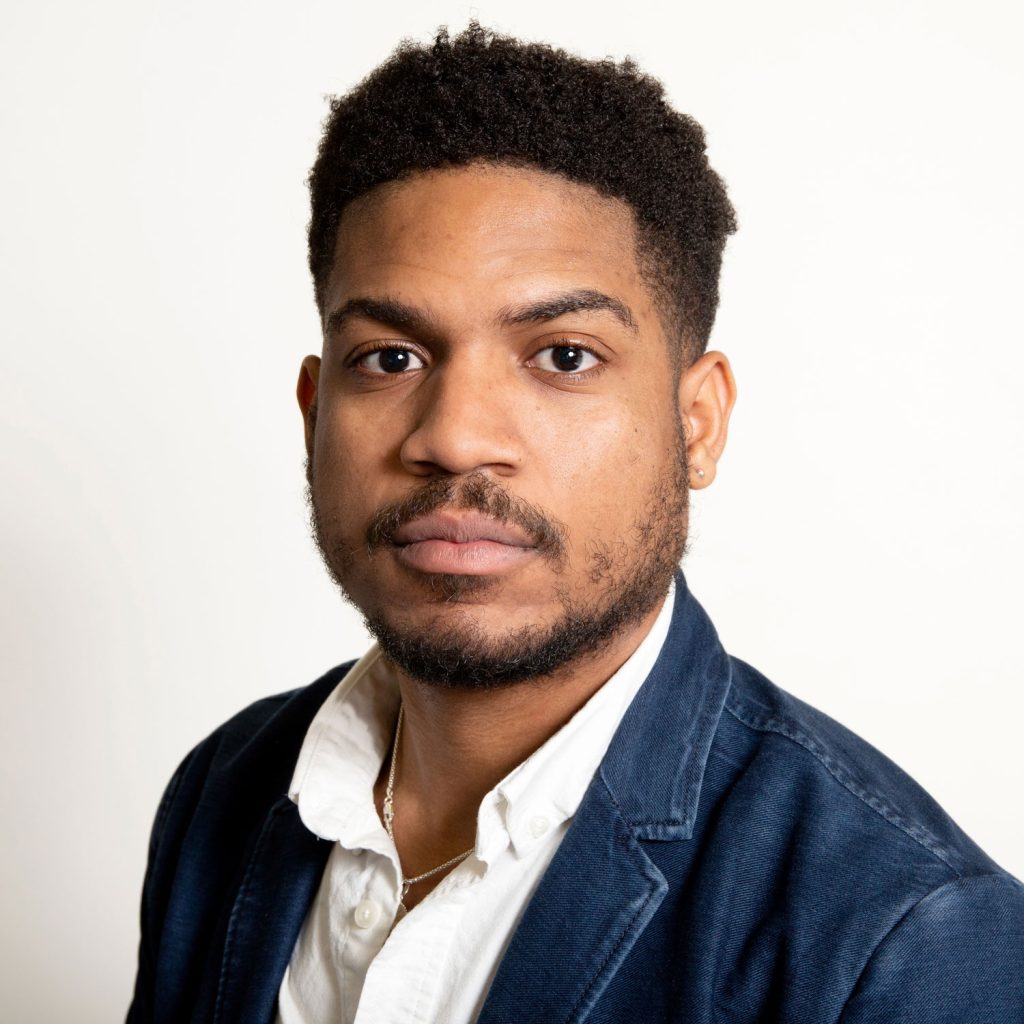I have a bachelor’s and master’s in international environmental law. I started out wanting to focus on aspects of justice and equity and realised in my third year, when I did an environmental law class, that the type of justice I was looking for was more on a systems level, as opposed to an individual level. With that, I decided to come back to Antigua after doing my bachelor’s.
I didn’t go into private practice — I started out in government. I moved into the Department of Environment, which opened up doors more broadly to defending the public interest — of humans, and our natural systems.
I was lucky enough that my boss — Ambassador Diann Black-Layne — was already in the centre of that world … the authority on things like raising finance for solving environmental problems. That’s why I ended up in the financing space.
Diann mentored me — really pushed me and gave me multiple opportunities. I’ll be forever grateful for that. I don’t think there’s any other department where I would have been exposed to all these international meetings and opportunities for building my capacity if it weren’t for her. I haven’t seen it in other countries.
She has one of the youngest departments, with people not only from Antigua but across the region and the world. Janine Coye-Felson [from Belize], who is a juggernaut in the space of sustainable financing, is also that way.
I’ve learned so much from these two Caribbean women: the way you go about dealing with diplomacy; positioning yourself and leveraging interests and positions; pushing for a collective good of small islands — not only from the Caribbean, but more broadly.
Janine was the chair of the Alliance of Small Island States (AOSIS) in 2019. I had started negotiations work in 2018, and I like to throw myself into things. I think that maybe left a mark with the Belizean team, and they asked me to coordinate amongst the over 30 states on matters of climate finance. That was my first interaction with AOSIS.
Then Antigua & Barbuda assumed the chairmanship for two years during Covid at the start of 2021. So I packed up my life and I moved to New York. It’s a very short career. But because of these women, the trajectory was like that. I don’t think any 24, 25-year-old would have that opportunity if it wasn’t for nurturing and visionary leadership.
To do justice to the story [of the Loss & Damage Fund, established in Egypt at COP27 in 2022], we have to go to the genesis of the entire international regime, which is 30-odd years old — the UN Framework Convention on Climate Change (UNFCCC).
Where are they after a storm? After a drought? Developed countries for decades basically gaslit developing countries by saying: you won’t have loss or damage if you get your act together, and [the UNFCCC] is not the regime to deal with that.
However, there are climate tipping points. And when you reach those tipping points, you could be the United States of America or Europe, but you’re still going to get heatwaves and tropical cyclones. You cannot fully adapt and brace for that. Even if you cut emissions all the way down today, the loss and damage will be locked in.
Fast forwarding to 2021, through our chairmanship, we decided to look at the system and ways we could intervene beyond just advocacy. There was a different type of discussion between negotiators and technical people like myself to coordinate and strategise.
We got the Group of 77 and China — the UN’s main developing country constituency grouping — to agree to put an agenda item on the issue. This was very strategic. What they’ve done in the past is keep the technical loss and damage discussions on one agenda item, and the finance items on another. We simply made sure when we requested this new agenda item — as a grouping — it was under the financial matters agenda.
We wanted to signal that we’re not talking about the technical issues or data gathering anymore — we are probably more aware than most developed countries about how to deal with loss and damage. What we do need is support and financing.
It was very surgical — and why understanding the process is very important — because now the presidency, everybody has to take notice of this item. Then collectively, we have to adopt the agenda before we start.
It was a full court press. You heard Prime Ministers Gaston Brown, Mia Mottley, Roosevelt Skerritt all asking: what is the point of coming into a COP if we cannot even discuss in solidarity? How can we get support to address the consequences of climate change under the UN Convention?
AOSIS, CANARI [the Caribbean Natural Resources Institute], the 5Cs [the Caribbean Community Climate Change Centre], media, civil society within the Caribbean were all a fundamental part of that. It really did feel like a dream team, from all different parts of the world, to try and get this through, and finally get it adopted in Egypt.
We established a committee, which I’m a part of, to operationalise it. I personally have been pushing for a fund that’s different from the other UN climate funds. Does an average person on the street know what the Adaptation Fund is, or know what the Green Climate Fund is?
Do you think we need to create a fund that is like those others, especially in the context of branding — their ability to communicate to people externally, to raise and attract funding from persons and private corporations, beyond just governments who have been doing a poor job at providing finance?
We need to have a secretariat and a fund that has a different culture, that is going to be accessible and diverse enough to get to the most vulnerable populations.
At the committee meeting [in early September], I must have mentioned culture and diversity about 10 or 20 times, because I am tired of going to funds where they’re primarily stocked up with white male economists based in Washington, DC that tell me how I should rebuild my country, when their country is not engaging in good governance from that perspective.
The image of the fund and how it represents itself is very important. Who is in the fund and operating it is very important. This will hopefully get you to the sources who want to put money into it; and ensure it’s agile enough — raising and disbursing capital for a 21st century crisis, whether it be through digital currencies or crowdsourcing.
It’s primarily the old colonial powers that have decision-making in institutions like the World Bank, the International Monetary Fund (IMF). It’s good to have taglines to say, yes, we’re going to focus more on climate change. But if the persons inside don’t care about climate change, or the instruments that created those organisations don’t even mention things like sustainable development, don’t we need an entire overhaul? How do we expect a bank to truly address the issues of public good if its ethos is to try and make money for the shareholders?
It’s the sleight of hand of the 1940s, and how one country was able to dictate how we perceive development — that it’s about economic growth and not about the well-being of humans and the planet.
We’re really good at beating the drum and being amazing advocates, amazing orators. That’s just the history of us in the Caribbean. Where we need work is building the right type of capacity — focusing on key areas.
I was talking to Diann the other day, and she highlighted how many of our people aren’t able to engage in the private international financial markets. If the trillions are there and we’re not, don’t we need to build capacity in how we deal with equity?
We’re really good at racking up debt, right? We can negotiate the IMF or World Bank loan like nothing. We’re good at programming grants. But how do we invest in local businesses, with financial institutions engaged in a way that allows for more local ownership in our private sector, as opposed to foreign direct investment?
We need people in STEM [science, technology, engineering, and mathematics]. Because they’re crucial to transitioning in the context of climate change. I feel like a “bush scientist”, because you have to be able to engage with very detailed models of how climates are going to be over time to plan correctly — looking at graphical GIS [Geographic Information Systems], climate meteorology, hydrology. We don’t have enough of that.
Our societies are also very much focused on religion and sports. And I think we also could be figuring out ways to use those influential parts of our community to teach and sensitise — influencing change from a grassroots level.

